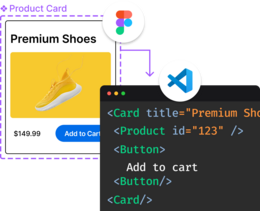Tip: We suggest reading this updated article about Headless CMSes.
A headless CMS is a content hub that serves limitless ‘heads.’ In this analogy, the ‘heads’ are the interfaces visitors use to interact with your business, such as social commerce, native apps, web apps, voice commerce, etc.
The best headless CMS for ecommerce is one that caters to both technical and non-technical teams. It provides non-technical teams with the ability to build out, test, and optimize websites and apps without relying on developers. And it’s easy for developers to set up and control. Lastly, it is easy to scale and has robust APIs, allowing developers to custom tailor it to their needs.
The best headless CMS for ecommerce should offer the following benefits:
1. High-performance content hub: a headless CMS can serve content quickly and easily to limitless ‘heads,’ such as social commerce, wearables, web apps, native applications, and more.
2. Ease of use: for non-technical teams to quickly build, preview and publish pages on your storefront, and for developers to set up and maintain the storefront.
3. Flexibility: for non-technical teams to create bespoke experiences and for your developers to tailor the content system to your specific needs.
4. Control: developers can easily determine what the CMS controls and which options are available to different users on different sections (e.g. homepage, product pages, collections, cart, etc.).
5. Extensibility: developers can easily extend the system’s functionality with plug-ins, native integrations, and APIs.
For more about what a headless CMS is and why ecommerce websites should consider using one, go 👉 here.
In this post, we compare the leading headless content management systems on key points, such as ease of use, flexibility, and extensibility to crown the best option for ecommerce. Spoiler alert, the winner provides non-technical teams with the ability to drag and drop to create blazing fast, digital shopping experiences.
Contentful
Prismic
Sanity
Storyblok
Builder
Comparison table
Conclusion
Contentful
As a pioneer headless content management system, Contentful is one of the most popular options. The system’s popularity stems from it being fairly flexible and easy to use for both developers and non-technical teams. However, bear in mind that you will need a developer to constantly update and maintain the system, as well as create new content models (components and templates that developers build for non-technical teams to use to update websites and apps). Contentful might also be a bit pricey for smaller storefronts.
Contentful offers several SDKs and maintains a vast integration marketplace to help developers get up and running. However, most of the integrations only cover basic configuration, which can help you get started, but your developers will need to build out more complex workflows to meet your needs.
Non-technical teams can update sites, apps, etc. easily with Contentful, using their content models. But, and this is a big but, if you want to test out a new layout (e.g. add a button) you’ll need a developer to first create a new content model, or update an existing one. Only then will you be able to test your new idea. So, if your agency or developers haven’t created every conceivable content model for you, you will continue to rely on them for new content updates. This disadvantage is not unique to Contentful, but it is important to call it out.
👉 Popular headless CMSs leave you reliant on developers.
You can update your sites and apps, but you can only use the components and templates that your developers / agency have build for you.
Here’s what a content model looks like in Contentful. As you can see, you really don’t have an option to tweak or change the content types, or the inputs they accept.
ℹ️ INFO BOX
A content model is structured data that represents a combination of content types. A hero section is an example of a content model that contains a title field with a character limit, an image with known dimensions, and a call to action button with a known design. Content models can also be used for full pages, but every page that uses that model will look the same.
The advantage of preconfigured content models is evident when you remember that a headless CMS serves limitless ‘heads.’ Preconfiguring the layout helps avoid breaking designs on different interfaces.
Contentful offers robust REST and GraphQL APIs and a wide variety of integrations, so your developers can easily connect to external sources and third-party apps.
Lastly, Contentful has a free tier that comes with one microspace and two locales, five users, 25K records (content entries and assets), and up to 48 content types. However, if you need additional content records, support, or control over role types, you’ll need to upgrade to a paid plan, which start at $489 a month.
All in all, Contentful is a popular option for good reason, but it requires on-going developer investment and is more on the expensive side.
Prismic
Prismic is another popular headless, API-first CMS that is fairly simple to use. However, the platform is a bit less advanced than the alternatives, such as Contentful and Builder. For example, you cannot extend the functionality of the built-in rich text editor. Pricing-wise, though, it is a more economical option, if you don’t require daily backups.
Prismic offers Slices, which are reusable vertical strips that non-technical teams can drag and drop onto the pages of your website. Slices provide non-technical teams with more flexibility than they currently have with Contentful. However, non-technical teams are still reliant on developers with Prismic, as they can only use the Slices and components that developers have pre-built for them.
Prismic offers several SDKs and native integrations for Shopify and Magento to help your developers get up and running. The system also comes with the ability for non-technical teams to build content models using 17 content types, such as title, image, short description, link, number, embed, etc. However, bear in mind that to actually use these new content models to create new content on your site a developer needs to first code them in. So, you remain reliant on developers for new content with Prismic as well.
👉 We are here to help! Schedule a free consultation to learn more about going headless and how Builder can help.
Here’s an example of what a hero section content model looks like on Prismic:
Prismic offers REST and GraphQL APIs and offers a free tier for developers, so they can test out the platform without any commitment. The platform’s main disadvantage is on the customization and extensibility side, where it is behind the curve. There isn’t even an option to extend the rich text editor or mark certain fields as mandatory, for example.
Pricing-wise, Prismic is more economical. Paid plans starting at $100 a month per repo, however, if you would like your content to be backed up automatically, you’ll have to upgrade to the $500 a month plan (weekly backups), or enterprise plan (daily backups).
Overall, Prismic is a popular, cost-effective headless CMS that is a bit less advanced than the alternatives.
Sanity
Sanity is a popular headless CMS because it is fully customizable. Sanity Studio is a React-based open-source content management system that your developers can fully customize and tailor to your needs. However, development is more time-consuming and the platform requires more maintenance than the other leading headless content systems.
Developer convenience is where Sanity really shines. It goes above and beyond the competition, providing developers with direct access to the CMS source code. However, access to the source code does have a few disadvantages, such as:
1. Tweaking and maintaining Sanity Studio is more time consuming than maintaining the other headless content systems.
2. Keeping track of the source files and ensuring the Studio stays up to date gets increasingly difficult as you grow and scale your storefront.
3. Sanity doesn't offer out-of-the-box support for user permission management through a GUI.
Sanity offers several SDKs and robust REST and GraphQL APIs to get your developers started. The platform also offers native integrations with Commerce Layer and Netlify.
As for pricing, Sanity offers a free tier and a $199 a month subscription, both capped based on user count, number of databases, and file and storage limits. However, if you require access control, historic records, or more advanced features, you’ll have to upgrade to the enterprise plan.
All in all, Sanity is a popular headless CMS that provides developers with direct access to the Studio source code. However, the system also requires more developer investment than the alternatives.
👉 Get started with Builder's headless CMS free and experience it for yourself
Side note: Storyblok
We’d be remiss if we didn’t mention Storyblok, which is trying to bridge the gap between a headless CMS and a website builder. It attempts to combine the simplicity of a drag and drop website builder with the efficiency of a content hub. It offers non-technical teams a way to visually build their sites, as opposed to just inputting content into the headless CMS.
While this sounds ideal, non-technical teams are confined to a set of pre-configured components that their developers have built (as in the case of Prismic Slices). Non-technical teams can build pages from scratch, but they can only use the custom components their developers created for them. You simply cannot create bespoke shopping experiences without a developer.
Builder
Builder’s headless CMS was built with ecommerce businesses in mind. It provides non-technical teams with complete autonomy, while maintaining developer control. It comes with all the capabilities of headless content systems (listed above) as well as a powerful, intuitive drag and drop visual editor. It works with any website, app, and channel, is completely modular and 100% customizable. Most importantly, you can start building just one section or page, prove ROI early on, and then expand to a full-fledged headless CMS.
Builder’s headless CMS empowers marketers, merchandisers, and product managers to create rich, engaging, digital experiences without constantly relying on developers. They simply drag and drop to build, preview and publish high-speed shopping experiences. And developers can easily determine which parts of the storefront are controlled by Builder, who can access them, and what kind of changes they can make. (Some pages might support the creation of fully bespoke experiences by certain roles, while others might only support the use of a set of predefined components, similar to Storyblok).
Builder is completely modular, so you can use it as a headless CMS powering your entire frontend, as a landing page builder for paid and organic campaigns, or even as an external data layer. Regardless of how you choose to use Builder, you’ll also have access to advanced features that allow for personalization at scale, such as built-in high-speed A/B testing, heatmaps, popups, announcement bars, and the ability to target content based on any criteria (e.g. browsing behavior, previous purchases, items in cart, etc.).
Builder is also compatible with every website /app setup, ecommerce platform, and third-party software (e.g. PIM, CRM, etc.). It offers several SDKs, robust REST and GraphQL APIs, and native integration with Shopify to make the process of taking your Shopify store headless much easier. Lastly, it takes less than an hour to integrate with Builder and start building pages on your existing site or app.
Builder is the only headless CMS that truly removes developers from the process of updating the site, crowning it the best headless CMS for ecommerce.
Builder was built for ecommerce
Builder was built to simplify the process of managing ecommerce websites and apps. Builder’s co-founders have been focused on headless ecommerce for several years and truly understand the unique needs and challenges of running ecommerce businesses.
Builder is the only CMS to remove developers from the process of updating the storefront
Builder comes with an intuitive drag and drop visual editor that allows non-technical teams to create fully bespoke experiences. With Builder, non-technical teams can add a button to a page on their own. They can create and test new formats, layouts, and ideas without creating tickets and adding to developers’ backlogs.
Builder is fully customizable
Builder gives developers full control. Most headless CMSs draw the line at custom code components and roles and permissions, with Builder everything is in your control.
Everlane, for example, uses Builder as a comprehensive headless CMS that powers the entire frontend. Some sections of the site (like the homepage) are only editable with pre-built custom components from the brand’s design system, while other sections are fully customizable (for example landing pages).
👉 Get started with Builder's headless CMS free and experience it for yourself
Contentful vs Prismic vs Sanity vs Builder
A head-to-head comparison of the leading headless content management systems.
Features
APIs
SDKs
Ecommerce integrations
CDN
Single-sign on
Webhook support
Custom roles
Image optimization
Customizable editor (apps and plugins)
Drag and drop code components (design system)
Drag and drop visual editor
Drag and drop bespoke pages and sections
Real-time preview
Optimization layer (A/B testing, analytics, content segmentation)
Contentful
REST, GraphQL
Prismic
REST, GraphQL
Sanity
REST, GraphQL
Builder
REST, GraphQL


























